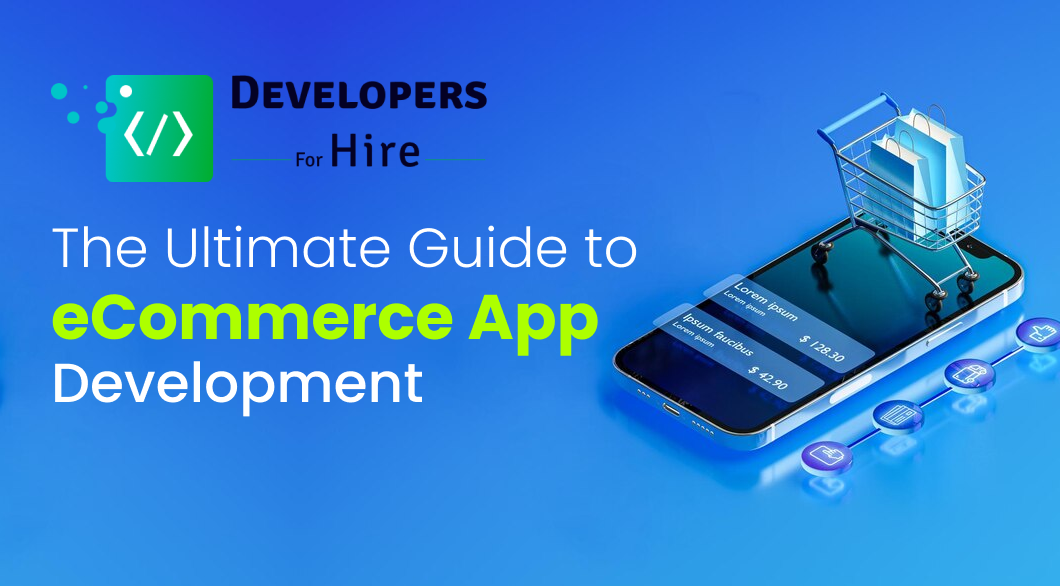How Can You Disrupt the Market by Building Your Marketplace Platform?
Focus on targeting niche keywords that align with your product offerings to rank higher in search results. Additionally, invest in paid advertising campaigns, such as Google Ads and social media ads, to reach potential users who are searching for the solutions your marketplace provides.
The digital landscape is rapidly evolving, and the way people buy and sell products has changed dramatically. Traditional commerce models are being replaced by digital marketplaces, where businesses connect directly with consumers, offering convenience, variety, and competitive pricing. While large platforms like Amazon and eBay dominate the market, there's still ample room for new entrants to disrupt the space by creating innovative, custom-tailored marketplace solutions. If you're considering how to build a marketplace app, this blog will guide you through how doing so can help you not only enter the market but also disrupt it effectively.
Understanding Market Disruption
Market disruption happens when a new player in an industry changes how business is conducted, often introducing more efficient, accessible, or affordable options for consumers. For example, Uber disrupted the taxi industry by making ride-hailing more convenient, and Airbnb redefined travel accommodations by connecting homeowners with travelers.
When you build a marketplace app, your goal is to identify the pain points or inefficiencies within an existing industry and provide a solution that significantly improves the user experience. If executed correctly, your marketplace app can be the catalyst that changes how an entire sector operates, leading to widespread adoption of your platform.
The Advantages of Building a Custom Marketplace Platform
Before we dive into the specifics of how to disrupt the market, it’s important to understand the advantages of building a custom marketplace platform versus relying on off-the-shelf solutions.
- Tailored Features: Off-the-shelf solutions are often generic and cater to a broad range of industries. A custom-built platform, on the other hand, can be tailored to meet the specific needs of your target audience. This allows for flexibility and innovation that can set you apart from established competitors.
- Unique User Experience: User experience (UX) is key to market disruption. By building a marketplace app, you can design every touchpoint to ensure that users—whether buyers or sellers—find it intuitive, efficient, and enjoyable. This not only helps retain users but can also attract a new customer base looking for a better alternative to what’s currently available.
- Scalability and Control: A custom platform gives you full control over how you scale your business. As your marketplace grows, you can add features, expand into new markets, or onboard more vendors without being restricted by the limitations of a third-party platform.
With a solid foundation of custom features and scalability, you're ready to take the next step in disrupting the market.
Identifying the Market Gaps
The first and most crucial step in disrupting any market is identifying gaps that are currently underserved. By focusing on these areas, you can build a marketplace app that offers solutions competitors have overlooked.
- Niche Market Segments: Instead of trying to compete directly with large, established marketplaces, consider focusing on a niche. Specializing in a particular product category or service can make your platform the go-to destination for that market segment. For example, Etsy focused on handmade and vintage items and became a major player in the e-commerce space by catering to a specific audience.
- Untapped Demographics: While many marketplaces focus on the mass market, there are often untapped demographics that have unique needs. This could be anything from eco-conscious consumers looking for sustainable products to professionals seeking niche B2B services. By catering to a specific group, you position your marketplace as the only platform that truly understands their needs.
- Inefficiencies in Current Marketplaces: Examine the pain points in existing platforms. Are there issues with customer service, slow deliveries, high commission fees for vendors, or a lack of personalization? Solving these problems through your marketplace app can provide a superior user experience that draws users away from established competitors.
Leveraging Technology to Innovate
Technology is one of the biggest enablers of market disruption. By leveraging cutting-edge technologies, you can build a marketplace app that operates more efficiently and offers better services than your competitors.
- Artificial Intelligence (AI): AI can be used to provide personalized product recommendations, optimize logistics, or even facilitate automated customer support. By integrating AI into your marketplace app, you offer a smarter, more intuitive experience for both buyers and sellers.
- Blockchain: Blockchain technology can be used to improve transparency and trust in your marketplace. Whether it’s for secure payments or verifying product authenticity, blockchain can give your platform an edge, especially in industries where trust is a significant concern (such as luxury goods or B2B transactions).
- Mobile Optimization: In a world where mobile commerce is overtaking desktop purchases, having a marketplace app that’s fully optimized for mobile use is critical. A mobile-first approach can improve user experience and drive higher conversion rates, particularly among younger, tech-savvy audiences.
By using these technologies, you not only enhance your platform’s functionality but also create a unique value proposition that sets you apart from existing competitors.
Creating a Seamless User Experience (UX)
A crucial aspect of building a marketplace app that can disrupt the market is ensuring a seamless and enjoyable user experience. Both buyers and sellers must find the platform easy to navigate, visually appealing, and quick to use.
- Simple Onboarding for Sellers: One of the key issues that many vendors face with large marketplaces is the complexity of joining and managing their stores. By simplifying the onboarding process for sellers and providing them with tools like easy inventory management, detailed analytics, and customer communication options, you make your marketplace more appealing than competitors.
- Streamlined Buyer Journey: For buyers, the marketplace experience should be as frictionless as possible. From product discovery to checkout, the entire process should be intuitive and quick. This can be achieved by incorporating features such as one-click checkout, saved payment options, and personalized recommendations based on user behavior.
- Customization and Personalization: Customization options for both buyers and sellers can create a unique experience that drives engagement. For instance, offering sellers the ability to create custom storefronts or enabling buyers to personalize their shopping preferences helps build loyalty and keeps users returning to your platform.
Building a Strong Vendor Ecosystem
In a marketplace, the success of the platform is directly tied to the quality and variety of vendors available. Disrupting the market requires not just attracting buyers, but also ensuring that vendors find value in using your platform.
- Lower Fees and Better Margins: Established marketplaces often charge high commission fees that eat into vendors' profits. By offering lower transaction fees or alternative revenue-sharing models, you can attract vendors who are frustrated with existing platforms.
- Vendor Support and Resources: Providing vendors with the right tools to succeed is critical. Offer resources such as marketing assistance, SEO optimization, and performance analytics that help them grow their business. The more successful your vendors are, the more attractive your marketplace becomes to buyers.
- Exclusive Vendor Partnerships: Partnering with key vendors or manufacturers for exclusive product offerings can give your marketplace a unique edge. By offering products that aren't available anywhere else, you can attract a loyal customer base eager for exclusive items.
By focusing on vendor satisfaction and providing them with the tools they need to succeed, you create a marketplace that not only attracts more sellers but also increases the variety and quality of products available to buyers.
Marketing Your Marketplace for Maximum Impact
Disrupting the market doesn’t happen overnight. It requires a solid marketing strategy that builds brand awareness, attracts users, and converts them into loyal customers.
- Influencer Partnerships: Partnering with influencers who align with your marketplace’s niche can help you reach a broader audience quickly. Influencers can promote your platform to their followers, providing authentic endorsements that lead to higher trust and user engagement.
- Content Marketing: By creating valuable content that educates your audience, you can establish your platform as a thought leader in your niche. Whether it’s blog posts, videos, or webinars, content marketing helps build credibility and attract both buyers and sellers to your marketplace.
- SEO and Paid Advertising: Search engine optimization (SEO) is essential for driving organic traffic to your marketplace app. Focus on targeting niche keywords that align with your product offerings to rank higher in search results. Additionally, invest in paid advertising campaigns, such as Google Ads and social media ads, to reach potential users who are searching for the solutions your marketplace provides.
By building a strong marketing campaign around your marketplace app, you increase the chances of user adoption and establish your platform as a formidable competitor in the industry.
Maintaining Agility and Adaptability
One of the hallmarks of market disruption is the ability to adapt quickly to changes. Whether it’s shifts in consumer behavior or the introduction of new technologies, your marketplace app should be flexible enough to evolve.
- Continuous Feedback Loops: Encourage both buyers and sellers to provide feedback on their experience using your platform. Use this feedback to implement continuous improvements, whether it's introducing new features, streamlining existing processes, or fixing bugs.
- Agility in Business Models: As your marketplace grows, you may need to adjust your business model to maintain competitiveness. For example, introducing subscription models, offering premium services for vendors, or expanding into new verticals can help keep your marketplace relevant and profitable.
Agility is critical for long-term success and ensures that your marketplace remains competitive even as market conditions change.
Conclusion
Building your marketplace app provides you with the unique opportunity to disrupt the market and establish your business as a leader in your chosen industry. By identifying gaps in the market, leveraging innovative technologies, creating a seamless user experience, and maintaining agility, your marketplace can offer superior value to both buyers and sellers.
Files
What's Your Reaction?
 Like
0
Like
0
 Dislike
0
Dislike
0
 Love
0
Love
0
 Funny
0
Funny
0
 Angry
0
Angry
0
 Sad
0
Sad
0
 Wow
0
Wow
0
















































